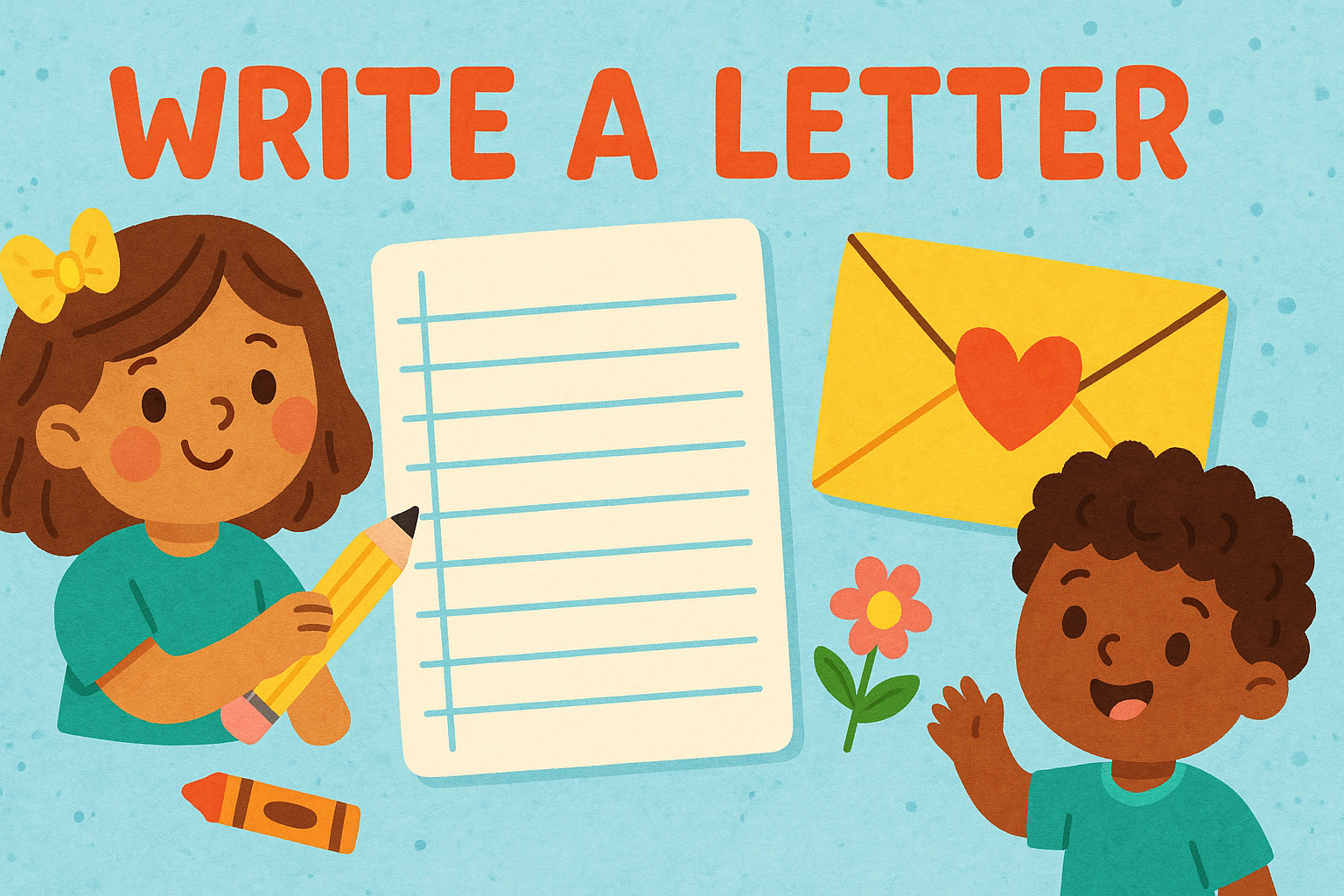In a world of texts and instant messages, sitting down to write a letter feels wonderfully thoughtful—and it’s just as exciting to send one as it is to receive one. For children, writing letters helps develop early literacy, emotional expression, and fine motor skills in a fun, purposeful way.
Whether they’re writing to a grandparent, a cousin, or even leaving a surprise note for a neighbour or sibling, letter-writing can be as simple or creative as they like. It’s also a lovely screen-free way to build connections and slow things down.
Materials Needed
- Paper or a notecard
- Pencil, pen, or crayons
- Envelope and stamp (if posting)
- Optional: stickers, drawings, or small photos
Tools Needed
- None
Steps
- Choose a Recipient
Let your child decide who the letter is for—a friend, a relative, or even their future self. - Write the Letter
Support them in sounding out words or writing what they’d like to say. It could include what they’ve been doing, how they’re feeling, or questions they want to ask. - Add Something Extra
Encourage them to include a drawing, a joke, or even a small surprise like a pressed flower or sticker. - Address and Post
Help with the envelope and posting process—or leave the letter somewhere special if it’s staying in the house. - Wait for a Reply (Optional)
Check the postbox and talk about how it feels to send and receive something personal.
Variations
- Pen Pal Letters: Start a regular swap with a friend or relative to build connection over time.
- Letters to Yourself: Write a letter to be opened in the future—a great reflective activity for older kids.
- Kindness Notes: Write anonymous letters of kindness to leave in books, postboxes, or neighbour’s porches.
- Holiday Themes: Send birthday, seasonal, or thank-you letters using festive colours or stickers.


Leave a Reply